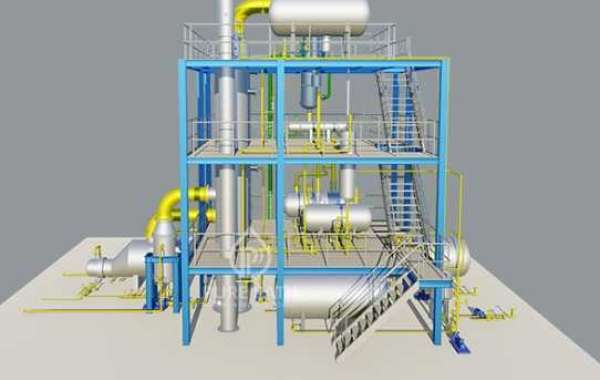The Challenge of Sulfur in Marine Fuels
Traditionally, many ships have relied on heavy fuel oil, which contains a significant amount of sulfur. When burned, this sulfur is released into the atmosphere in the form of sulfur dioxide (SO2). This contributes to air pollution, and acid rain, and poses a significant health risk to coastal communities and marine ecosystems.
To combat these issues, international organizations, notably the International Maritime Organization (IMO), have implemented regulations to limit sulfur emissions from marine fuels. The IMO's global sulfur cap, which came into effect in January 2020, restricts the sulfur content in marine fuels to 0.50% by weight, down from the previous limit of 3.50%.
The Role of Desulfurization Plants
Desulfurization plants, often referred to as "scrubbers," have emerged as a key technology in achieving compliance with these stricter sulfur regulations. These plants are responsible for removing sulfur compounds from marine fuels, significantly reducing the level of sulfur emissions when the fuel is burned.
Desulfurization processes can be categorized into two main methods:
- Exhaust Gas Cleaning Systems (EGCS): These scrubbers are installed on the exhaust systems of ships. They remove sulfur dioxide from the exhaust gas by washing it with a neutralizing agent, such as seawater or alkaline solutions, to form non-polluting byproducts.
- Low-Sulfur Fuel Alternatives: Another approach involves using low-sulfur marine fuels, such as marine gas oil (MGO) or liquified natural gas (LNG), which inherently have reduced sulfur content.
Significance of Desulfurization for Marine Fuels
- Environmental Protection: The primary goal of desulfurization is to protect the environment and public health. Reducing sulfur emissions helps curb the harmful effects of air pollution and acid rain while preserving marine ecosystems.
- Regulatory Compliance: Desulfurization plants enable ship operators to meet stringent international emission standards like the IMO's sulfur cap. Compliance with these regulations is essential to avoid penalties and maintain the industry's reputation.
- Health Benefits: Lowering sulfur emissions from ships results in improved air quality and reduces the health risks associated with sulfur dioxide exposure in coastal communities and among seafarers.
- Economic Viability: Investing in desulfurization technology can be economically advantageous in the long term. By avoiding fines and penalties and ensuring access to compliant fuels, ship operators can maintain their competitiveness in the global market.
Challenges and Future Prospects
While desulfurization plants are a vital part of the solution to reduce sulfur emissions, their installation and operation present challenges, including initial costs, maintenance, and potential environmental concerns related to scrubber effluents. Continuous research and innovation are necessary to address these challenges and enhance the efficiency of desulfurization technologies.
In conclusion, desulfurization plants represent a crucial component in the maritime industry's efforts to meet international emission standards and reduce the environmental impact of marine fuels. By implementing these technologies, the industry is taking significant steps toward a cleaner and more sustainable future, benefiting both the environment and public health. As advancements continue, we can expect even more effective and environmentally friendly desulfurization solutions for marine fuels.








